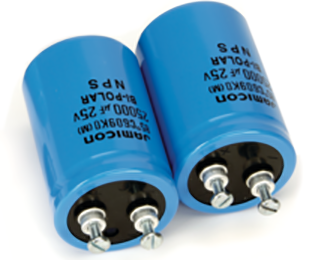Description
CASTLE (Capacitor-Aided System for Teaching and Learning Electricity) is a high school electricity curriculum that leads students from initial naive ideas to an increasingly expert understanding of electrical phenomena. A sequence of self-guided experiments uses large capacitors and transient bulb lighting to help students confront their misconceptions, grasp the physics of current propulsion and build intuitive explanatory models.
The core experiments stimulate students to model mobile charge as a compressible fluid and electric potential as “pressure” in the fluid. They learn that a pressure difference is what makes charge move through a resistor. The advanced experiments reveal two kinds of charge and distant action, which suggests modeling fields as pressure raising/lowering “halos” around ± charges. Connections between the electron, the atom and mobile charge in circuits are also explored.
CASTLE instruction gives priority to development of qualitative reasoning skills. No prior knowledge of electricity is required, making the curriculum accessible to students in all levels of high school physics.
The CASTLE approach originated in the research of Professor Melvin S. Steinberg of Smith College. The complete curriculum was developed by a team of college and high school physics teachers under a National Science Foundation grant. Extensive testing has shown superior conceptual and confidence gains. In 1994, CASTLE was certified a proven effective program by the U.S. Department of Education’s Program Effectiveness Panel.
In addition, the AAPT PTRA group has adopted CASTLE as has the C3P group and the Modeling Group demonstrating that CASTLE is being chosen by the leaders of physics education as the preferred method for teaching electricity.
The Student Manual (see Documents tab) has a number of investigations for each stated experiment, plus commentaries to prepare students for labs and summary exercises to reinforce the lab experience. The Teacher’s Guide contains a wealth of material that will help put the CASTLE Kits to their best possible use. To Download the Teacher’s Guide, contact PASCO Technical Support.
Features
- 25,000 µF Capacitor: Provides the foundation for this intuitive introduction to current electricity.
- Wires with Alligator Clips: Ten color-differentiated wires make circuit connections quick and easy: no soldering or wire twisting.
- Battery Holder: Securely holds batteries and yet makes them very visible so that their function within the circuit is evident.
- Miniature Light Bulbs: Differently shaped bulbs have different resistance values.
Typical Experiments
- Core Curriculum investigates:
- What is happening in the wires?
- What do the bulbs do to moving charge?
- Where does the moving charge originate?
- What makes charge move in a circuit?
- How do wires distribute electric pressure in a circuit?
- How are values of circuit variables measured?
- Advanced Curriculum investigates:
- Does all matter contain charge? What are electrons?
- What is the cause of distant action effects?
- What pushes on tiny charge carriers like electrons?
- How do semiconductors work? What is AC?
- How do motors and generators work?
- How are magnetic and electromagnetic fields produced?
Lab Activities & Experiments
| CASTLE Intro – Electricity Visualized | English | 100.58 KB | |
| CASTLE Section 01 – What is Happening in the Wires? | English | 371.84 KB | |
| CASTLE Section 02 – What do the Bulbs Do to Moving Charge? | English | 421.27 KB | |
| CASTLE Section 03 – Where Does the Moving Charge Originate? | English | 730.41 KB | |
| CASTLE Section 04 – What Makes Charge Move in a Circuit? | English | 296.24 KB | |
| CASTLE Section 05 – How Do Wires Distribute Electric Pressure in a Circuit? | English | 362.48 KB | |
| CASTLE Section 06 – How are Values of Circuit Variables Measured? | English | 611.45 KB | |
| CASTLE Section 07 – Does All Matter Contain Charge? What are Electrons? | English | 806.50 KB | |
| CASTLE Section 08 – What is the Cause of Distant-Action Effects? | English | 565.97 KB | |
| CASTLE Section 09 – How Do Semiconductors Work? What is AC? | English | 288.63 KB | |
| CASTLE Section 10 – What are Electric Fields? Do They Store Energy? | English | 1.19 MB | |
| CASTLE Section 11 – How Do Motors & Generators Work? What Do Magnetic Fields Do? | English | 335.83 KB | |
| CASTLE Section 12 – How Are Electromagnetic Fields Produced? How Do They Drive Transformer Operation and Transport Energy? | English | 277.94 KB |
What’s Included
- 1x 25,000 μF capacitor (20 V, nonpolar)
- 4x #14 light bulbs (round)
- 6x #48 light bulbs (oblong)
- 4x 10 Ohm resistor
- 4x Miniature light bulb sockets and stands
- 10x Wires with alligator clips
- 1x Battery holder (spring-loaded)
- 1x High-quality compass
- 1x Storage box
Supporting Documents
Compass Solvent Safety Data Sheet English 711.29 KB







